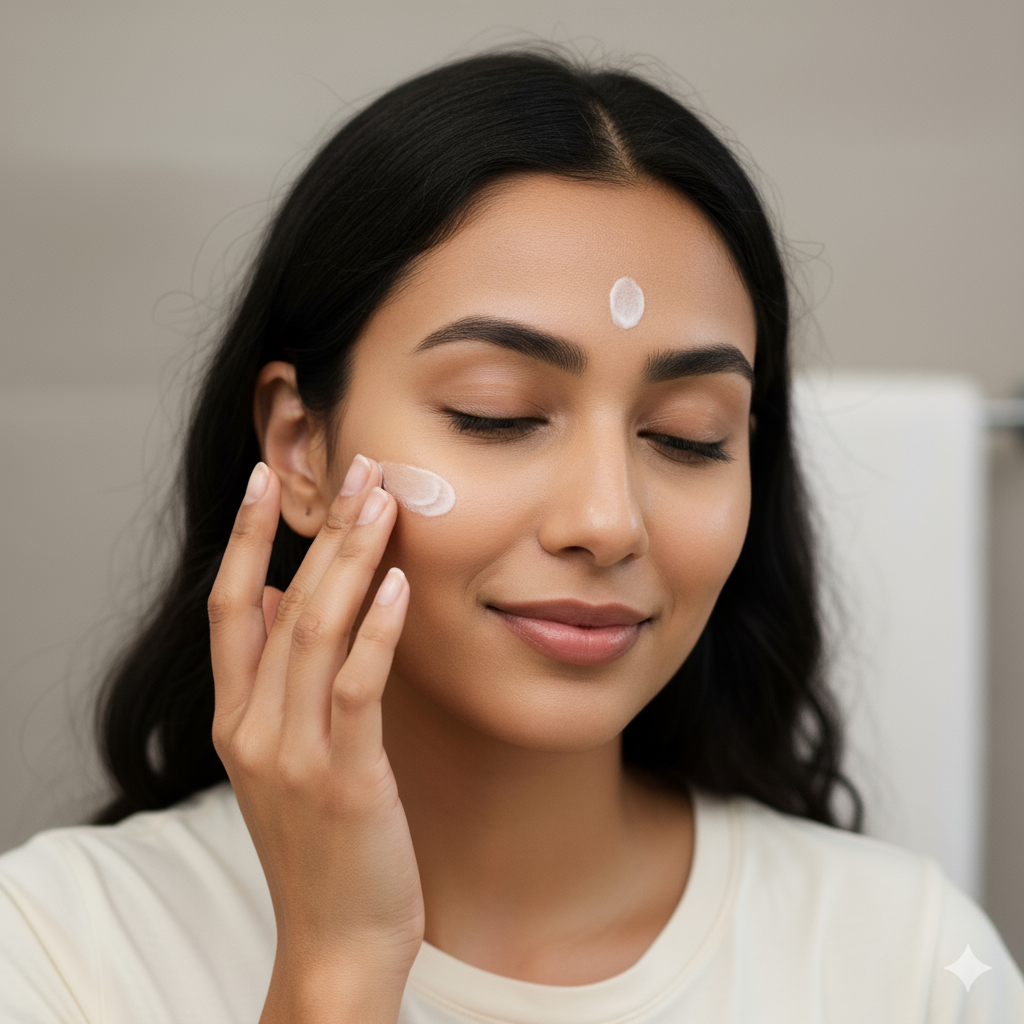
The Monsoon Moisturiser Routine: Layering for Rainy-Day Skin
The monsoon season calls for a skincare routine that can handle humidity, pollution, and sudden weather changes while keeping skin hydrated and fresh. Moisturiser layering is a smart way to meet these challenges.
By applying multiple lightweight, hydrating products in the right order, you can lock in moisture, protect your skin barrier, and avoid the heaviness or stickiness often associated with monsoon skincare.
This blog will guide you through the ideal layering steps for monsoon moisturisers and share tips to keep your skin healthy and resilient throughout the season. Read along!

Why Moisturising Matters in Monsoon
Even though your skin may feel oily or sweaty, moisturising is still essential to keep it balanced and healthy. Skipping this step can cause dryness, irritation, or increased oil production as your skin tries to protect itself. Here’s why moisturising matters during the monsoon:
- Maintains Skin’s Hydration Balance: Humidity can disrupt your skin’s natural moisture levels, so a good moisturiser helps keep your skin properly hydrated without feeling heavy.
- Protects the Skin Barrier: Moisturisers strengthen the skin’s protective layer, shielding it from pollution, bacteria, and other environmental stressors common in the rainy season.
- Prevents Overproduction of Oil: When your skin is dehydrated, it may produce excess oil to compensate, leading to clogged pores and breakouts.
- Soothes Sensitivity and Irritation: The damp weather can cause fungal infections and irritation; moisturising helps calm and repair the skin.
- Keeps Skin Soft and Supple: Proper hydration prevents dryness and flakiness, giving your skin a smooth, healthy look even in humid conditions.
What Is Moisturiser Layering?
Moisturiser layering is the practice of applying multiple skincare products in a specific order to maximise hydration and protect your skin. During the monsoon, layering can help address different skin needs, like adding a light hydrating serum first, followed by a moisturiser suited for your skin type.
This method boosts the overall effectiveness of your skincare routine by sealing in moisture and offering added protection against environmental factors like pollution and humidity. When done right, layering keeps your skin nourished without feeling heavy or greasy, which is key during the monsoon season.
Identify Your Skin Type for the Right Monsoon Moisturiser
Choosing the right moisturiser during the monsoon depends largely on your skin type. Understanding whether your skin is oily, dry, or balanced helps you pick a product that keeps your skin hydrated without causing problems like excess oiliness or dryness. Here’s how you can choose the right moisturiser based on your skin type.
Moisturiser for Oily Skin
If your skin tends to get shiny or greasy during the monsoon, opt for a lightweight, oil-free, and non-comedogenic moisturiser. These formulas hydrate your skin without clogging pores or adding extra oil. Water-based moisturisers or gel-based formulas are ideal as they absorb quickly and leave a fresh, matte finish.
Moisturiser for Dry Skin
Dry skin can feel tight and flaky during the monsoon due to humidity changes. You need a richer, nourishing moisturiser that locks in moisture and restores your skin’s natural barrier. Look for ingredients like hyaluronic acid, glycerin, and ceramides that provide deep hydration without feeling heavy or greasy.
Moisturiser for All Skin Types
If you have combination or normal skin, a balanced moisturiser that hydrates without being too heavy or too light is the best choice. These products help maintain your skin’s moisture levels, protect against environmental stress, and keep your skin comfortable throughout the monsoon season.
The Perfect Monsoon Moisturiser Routine
A well-planned moisturiser routine is crucial to keep your skin comfortable and healthy during the monsoon season. The increased humidity can disrupt your skin’s natural balance, so choosing the right moisturiser and applying it correctly helps maintain hydration without causing excess oiliness or breakouts.
Here’s the perfect monsoon moisturiser routine that you can use:
- Begin your routine by cleansing your face with a gentle cleanser to remove dirt, sweat, and impurities accumulated during the day.
- Follow up with a moisturiser that suits your skin type: use a moisturiser for oily skin if you tend to get greasy, a richer moisturiser for dry skin if you feel tightness, or a balanced moisturiser for all skin types if you’re unsure.
- Apply the moisturiser twice daily — once in the morning and once before bed — to lock in moisture and protect the skin barrier.
- During the day, don’t forget to layer a broad-spectrum sunscreen to shield your skin from UV rays and environmental pollutants common in monsoon weather.
- Make adjustments as needed: if your skin feels too oily, switch to a lighter, water-based formula; if it feels dry or flaky, opt for a slightly richer moisturiser.
Bonus Tips for a Monsoon Skincare Routine
To get the best results from your monsoon skincare, it helps to follow a few additional tips that go beyond just moisturising. These include:
- Choose non-comedogenic and fragrance-free skincare products to reduce the risk of clogged pores and irritation, especially during the humid monsoon months.
- Drink plenty of water throughout the day to stay hydrated. Internal hydration plays a big role in your skin’s health and appearance.
- Avoid heavy makeup or thick creams, which can trap sweat and dirt and lead to breakouts. Instead, opt for lightweight, breathable formulations.
- Exfoliate gently once or twice a week to remove dead skin cells and prevent clogged pores, but avoid over-exfoliating as it can weaken your skin barrier.
Use the Cetaphil AI Skin Analysis Tool for personalised product recommendations based on your skin type. This helps you choose the most effective products tailored to your specific needs, ensuring your skin stays balanced and healthy throughout the monsoon.
FAQs
Can oily skin skip moisturiser during monsoon?
No, oily skin should not skip moisturiser during the monsoon. Using a light, non-comedogenic moisturiser helps balance excess oil and keeps your skin hydrated without feeling greasy. It’s a key part of any effective monsoon skincare routine.
How often should I moisturise in the monsoon?
You should moisturise at least twice a day during the monsoon—once in the morning and once before bed. This keeps your skin hydrated and protected, especially when using cleansers or exfoliants as part of your moisturiser regimen.
What's the best moisturiser for dry skin during the rainy season?
A rich, nourishing moisturiser for dry skin works best in the rainy season. It helps lock in moisture and prevents your skin from feeling tight or flaky amid humidity and frequent washing.'
Can I layer products on sensitive skin in monsoon?
Yes, but be cautious. Use gentle, fragrance-free products to avoid irritation. Layering a hydrating serum under a gentle moisturiser for all skin types can improve hydration without overwhelming sensitive skin during the monsoon.




